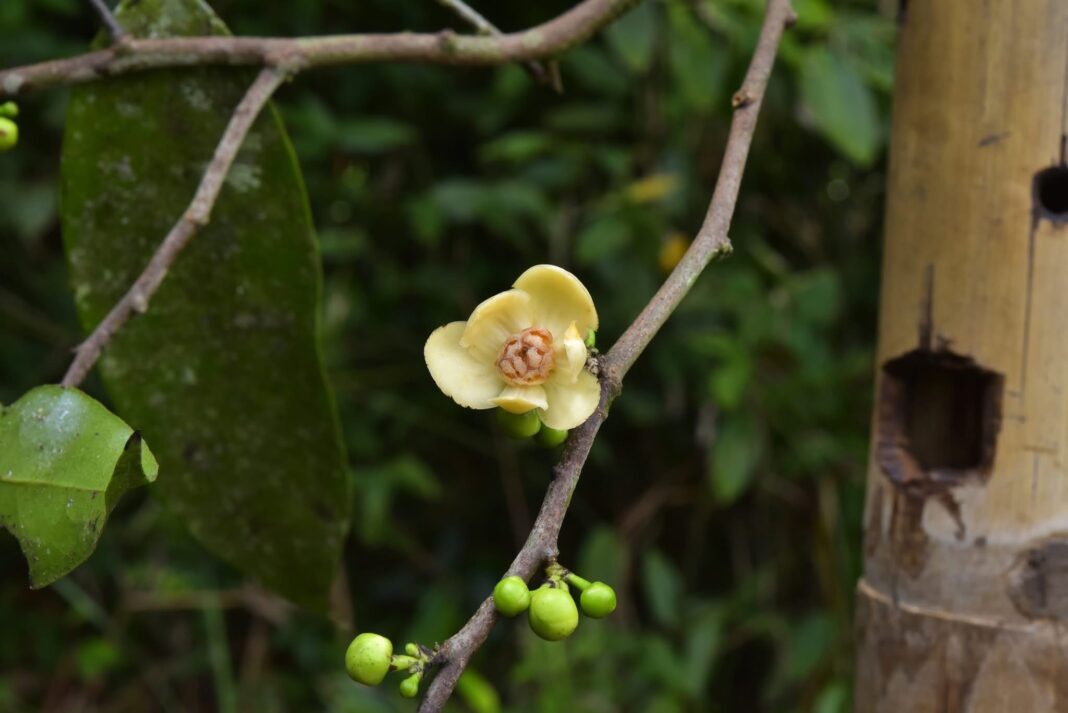- “Tharathum” (Sageraea multiovulata) is a newly discovered species in the ylang-ylang family
- Identified in Khian Sa district, Surat Thani — a wetland submerged six months annually
- Tree reaches up to 18 meters and contains 19–20 ovules per ovary — highest in its genus
- Published in Plant Systematics and Evolution on May 1, 2025
- Conservation status: Critically Endangered, with only one known population
Thai scientists have announced the discovery of a rare and ecologically significant new species of tree named Tharathum (Sageraea multiovulata), found in the wetland ecosystems of Khian Sa district in southern Thailand’s Surat Thani province. The discovery was officially published on May 1, 2025, in the international scientific journal Plant Systematics and Evolution (Vol. 311, Issue 3).
The research was led by Dr. Chattida Wiya, plant taxonomist at the Botanical Garden Organization (BGO), in collaboration with Assoc. Prof. Dr. Tanawat Chaowasku (Chiang Mai University), Dr. Anissara Damthongdee (Postdoctoral researcher), and technical officers from the Department of National Parks (DNP): Mr. Aroon Sinbumroong, Mr. Porntawat Chalermwong, and Mr. Padungsak Suekaew. The team also included Assoc. Prof. Dr. Sutee Duangjai from Kasetsart University and Ms. Hathaichanok Jongsook from the Department of Agricultural Extension.
Locally known as “Pi Tan” or “Kramok Nam”, Tharathum belongs to the genus Sageraea. The tree can grow up to 18 meters tall and produces clusters of cream to light-yellow flowers. Its large, greenish-yellow fruits ripen during Thailand’s rainy season and contain unusually high seed counts — 19–20 ovules per ovary — the highest ever recorded in this genus, compared to the typical 5–12 ovules.
The species thrives in an ecologically rare, flood-dependent habitat on the banks of the Tapi River. The area is submerged for nearly six months annually. Scientists believe this submersion plays a critical role in the plant’s reproductive process — helping fruits soften and decay in water, enabling seed dispersal and germination.
To view the official announcement, visit the Botanical Garden Organisation – Facebook Post.
According to the BGO, the plant’s conservation status has been provisionally assessed as Critically Endangered (CR). Tharathum is known from only one small population in a wetland area surrounded by oil palm and rubber plantations. This isolated population is currently being protected by the local community of Ban Bang Pra, under the leadership of Mr. Pramuan Prasomrot.
To preserve the species’ genetics and promote ex-situ conservation, biodiversity researcher Mr. Jirawit Srichaikhan donated Tharathum seedlings to the BGO. These are now being cultivated at the Queen Sirikit Botanic Garden in Chiang Mai.
What’s Next
The Botanical Garden Organisation emphasizes the importance of long-term ecological monitoring and community engagement. If studies uncover valuable compounds in Tharathum, the species could hold economic promise and drive greater motivation for sustainable conservation in the region.
“Tharathum” highlights how fragile wetlands still hold unknown treasures that connect biodiversity, culture, and conservation.
(with inputs from Botanical Garden Organisation)
A global media for the latest news, entertainment, music fashion, and more.















